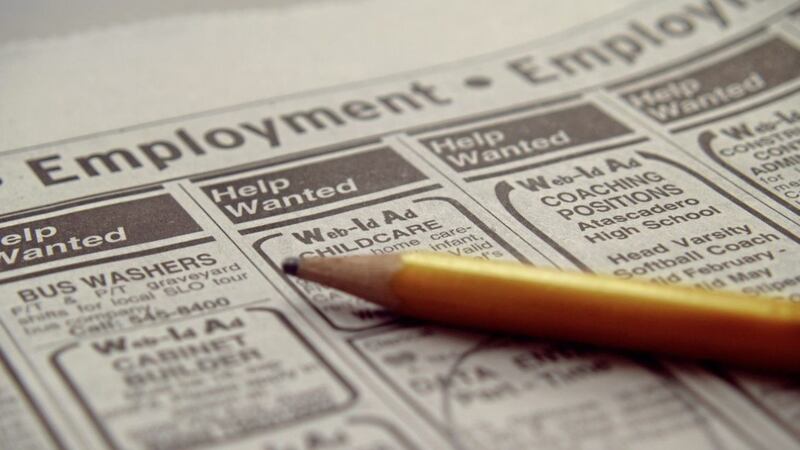THERE were 300 people fewer on the dole que in Northern Ireland in March as the claimant count fell to 31,500, according to the latest government figures.
The number of people claiming unemployment related benefits has come down by 7,000 in the last year, but that's still way off its absolute low point of 23,500 in September 2007.
The quarterly (December to February) unemployment rate also dropped by nearly half a percentage point to 5.2 per cent, which is down 1.1 per cent over the year - higher than the UK rate of 4.7 per cent but below that in the Republic (6.6 per cent) and European Union (8.1 per cent).
The survey showed that there were 731,390 people in work in December - up 2,490 on the year (a 0.3 per cent increase), with growth concentrated in the private sector (the public sector shrank over the last 12 months).
There were 139 confirmed redundancies in March - and in the last year the total number of workers who've been put on notice was 3,480 - a whopping 61 per cent on the previous year's figure of 2,161 in the previous year.
But Dr Esmond Birnie, senior economist at the Ulster University Economic Policy Centre, said that while the headline falls in claimant count and jobless rates represented good news, when you dig deeper into the data is shows "some evidence of a lost decade in the Northern Ireland labour market".
He said: "Of crucial importance in terms of the raising living standards and output and reducing household poverty is increasing the proportion of people in employment.
"This data indicates that Northern Ireland's employment rate shows little sign of long term improvement and has even declined in recent months - by 0.5 per cent points over the quarter to 68.8 per cent.
"That figure of about 69 per cent it the same level as in 2007. In other words, over the last decade there has been no improvement, which contrasts to the situation in the rest of the UK where the employment rate has increased by several percentage points to 74.6 per cent."
He added: "The mirror image of a disappointing out-turn in terms of the employment rate is that economic inactivity is rising again, up by 0.9 per cent over the year to 27.3 per cent, contrasting to the UK average rate of 21.6 per cent.”
In the UK as a whole, unemployment has fallen to its lowest in a decade as a record number of job vacancies are on offer.
The jobless total was cut by 45,000 in the quarter to February to 1.56 million, a reduction of 141,000 since a year ago and the lowest since the end of 2006.
The number of people in work continued to increase - up by 39,000 on the latest quarter to 31.8 million, giving an employment rate of 74.6 per cent, the joint highest since records began in 1971.
Vacancies were up by 16,000 to a record 767,000, with strong growth in accommodation and food services sectors.
The number of people classed as economically inactive, including those looking after a relative, on long-term sick leave, or who have given up looking for work, fell by 10,000 to 8.8 million, although the rate remained little changed at 21.6%.
Average earnings increased by 2.3 per cent in the year to February, unchanged from the previous month, reported the Office for National Statistics (ONS).
Senior ONS statistician David Freeman said: "A joint record employment rate and a new record high for the number of vacancies point to continued strength in the labour market.
"However, higher inflation, coupled with subdued earnings increases, means that the real growth rate in pay has tailed off to just above zero."
The number of self-employed workers has increased by 17,000 to 4.78 million, 15 per cent of all people in work, and close to a record high.
The ONS also reported a shift in part-time to full-time employment.








